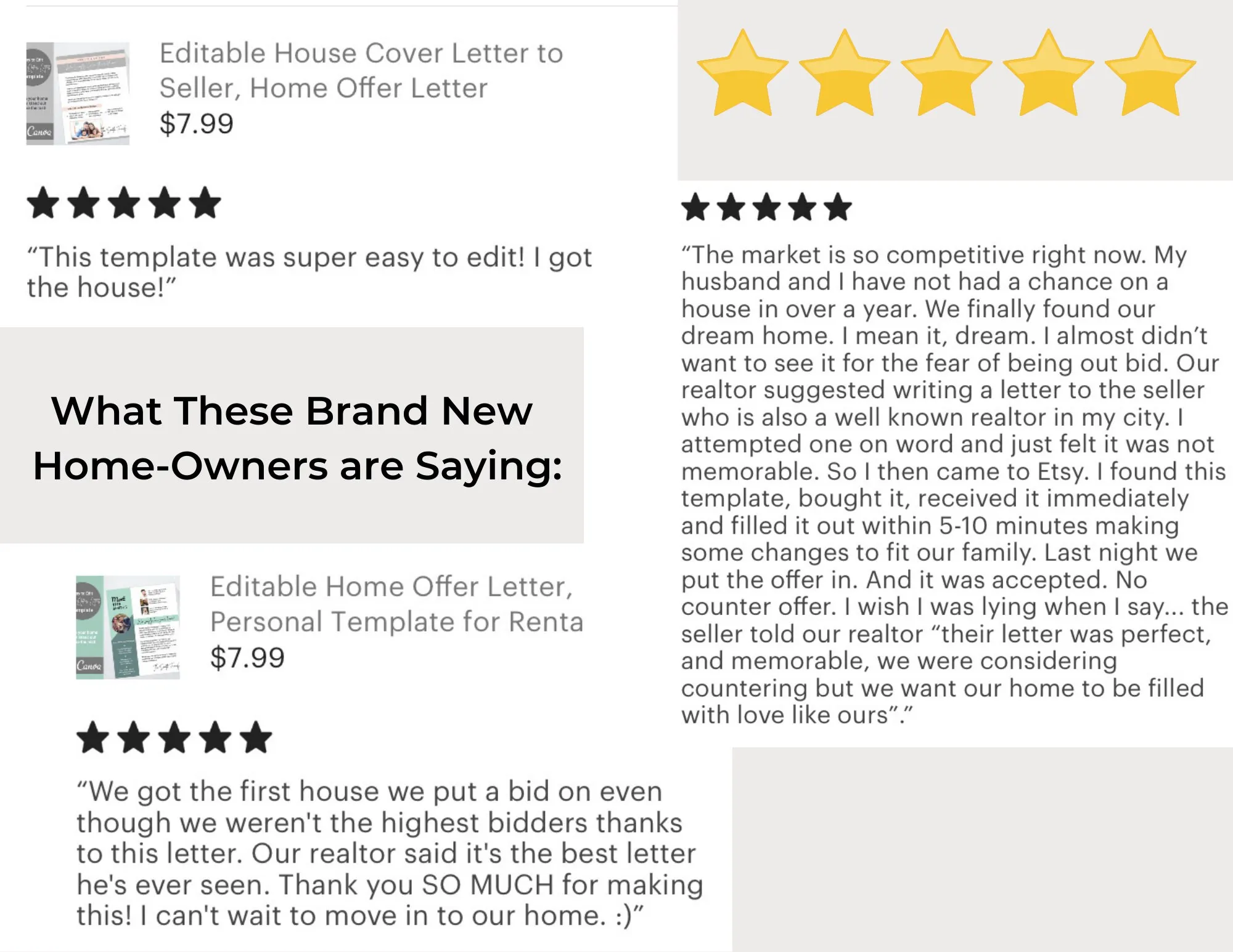Understanding the Home Offer Cover Letter
Navigating the world of real estate can be complex, especially when it comes to securing your dream home. One crucial tool that often gets overlooked is the home offer cover letter. This letter is your opportunity to make a personal connection with the seller and distinguish your offer from the competition. In this comprehensive guide, we’ll delve into the art of crafting a compelling home offer cover letter, providing you with the knowledge and insights needed to increase your chances of success. A well-written cover letter can be the deciding factor in a seller’s decision-making process, showcasing your genuine interest and building rapport.
Why a Home Offer Cover Letter Matters
In a competitive real estate market, simply submitting an offer isn’t always enough. A home offer cover letter provides a crucial human element, allowing you to connect with the seller on a personal level. It goes beyond the numbers, offering a glimpse into your personality, motivations, and appreciation for their property. This can be particularly impactful if there are multiple offers, as it gives the seller a reason to choose you over other potential buyers. In many cases, sellers are emotionally invested in their homes and want to pass them on to someone who will appreciate them. The cover letter is your chance to demonstrate that you are that person. The home offer cover letter also offers a great opportunity to outline your financial health and set yourself apart.
Benefits of a Well-Crafted Letter
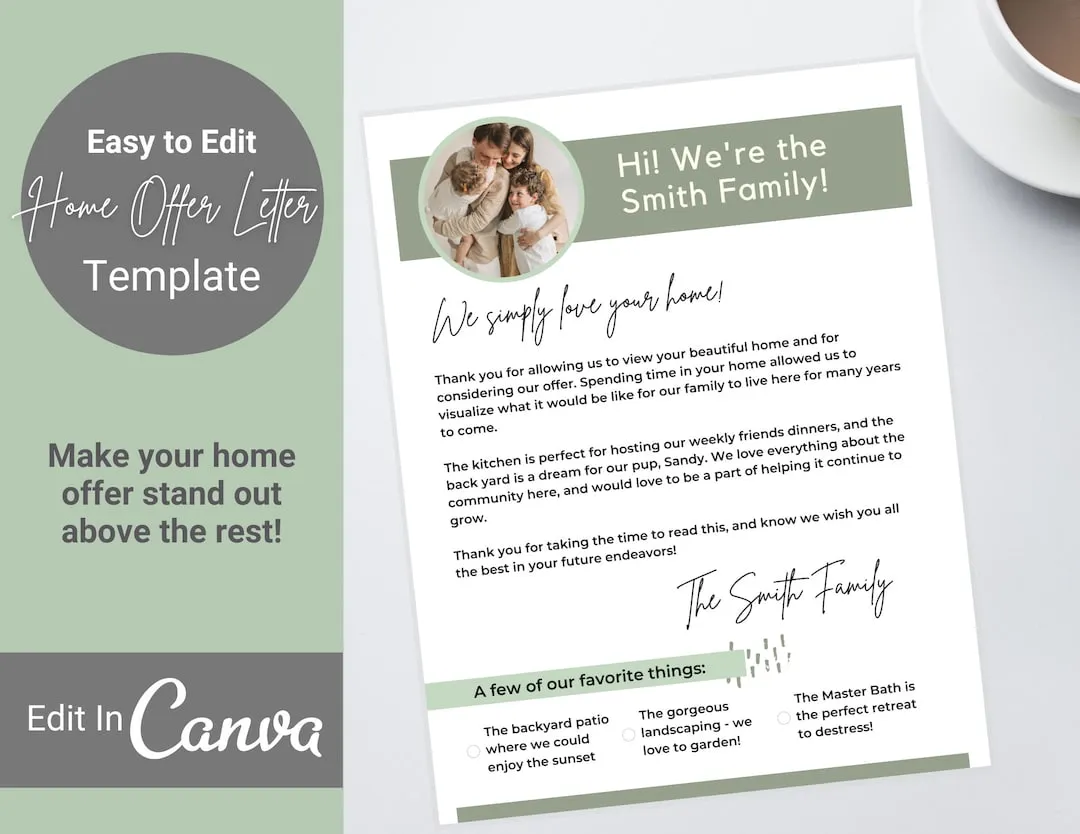
The benefits of a well-crafted home offer cover letter are numerous. It can sway the seller’s decision in your favor, especially if the offers are similar. It allows you to highlight your strengths as a buyer, such as your financial stability, pre-approval status, or flexible closing date. A well-written letter can also address any potential concerns the seller might have. For example, if you’re a first-time homebuyer, you can express your eagerness and commitment to the process. If you’re planning renovations, you can assure the seller that you’ll respect the home’s character. Moreover, a cover letter shows that you’re willing to put in the extra effort, demonstrating your serious interest in the property. This level of detail is very helpful when trying to get your offer accepted.
Key Components of a Compelling Letter
A compelling home offer cover letter includes several key components. Each element contributes to the overall impact and persuasiveness of your message. From the opening statement to the closing remarks, every word should be carefully chosen to create a positive impression. Remember to keep the tone friendly, professional, and sincere. Personalization is key; avoid generic phrases and tailor your letter to the specific property and seller. Highlighting your qualifications, expressing enthusiasm, sharing your financial readiness, and adding a personal touch are all vital elements that can enhance the effectiveness of your letter. Using these key components will give you an edge over other buyers.
Your Introduction Making a Strong First Impression
The introduction sets the tone for your entire letter. It’s your chance to make a strong first impression and capture the seller’s attention. Start by addressing the seller by name, if possible; this shows you’ve done your research and taken the time to personalize your message. Briefly introduce yourself and state your interest in their property. Express your admiration for the home and mention something specific that caught your eye. This demonstrates that you’ve genuinely considered the property. Keep the introduction concise, enthusiastic, and focused on building an immediate connection. The tone of this section should be friendly and engaging, making the seller feel like you are genuinely interested in their house.
Highlighting Your Qualifications

In this section, briefly highlight your qualifications as a buyer. Mention any relevant information that can reassure the seller about your ability to close the deal. If you’re pre-approved for a mortgage, state the amount and the lender’s name. This demonstrates your financial readiness and commitment to the purchase. If you’re a cash buyer, explicitly state that. This can be a significant advantage in a competitive market. If you have a flexible closing date or can accommodate the seller’s needs, mention that as well. This shows that you’re willing to work with them to make the transaction as smooth as possible. Presenting your qualifications accurately will help the sellers gain trust in you.
Expressing Your Enthusiasm
Expressing your genuine enthusiasm for the property is crucial. Let the seller know why you love their home and what aspects of it appeal to you most. Mention specific features or details that you appreciate, such as the architecture, the garden, or the neighborhood. This shows that you’ve truly considered the property and envision yourself living there. Avoid generic phrases and be specific. If you plan to raise a family in the house, mention it. If you love to cook, talk about the kitchen. If you’re drawn to the outdoor space, share your plans. Your enthusiasm can make a significant difference. The more passion you express, the higher your chances of acceptance.
Sharing Your Financial Readiness
Reassure the seller of your financial readiness and ability to complete the purchase. Provide details about your financing, such as whether you are pre-approved for a mortgage or paying in cash. If you’re obtaining a mortgage, mention the loan amount and the lender you are working with. If you are paying cash, state this clearly. This information assures the seller that you’re a serious and qualified buyer. You can also mention the down payment amount and any other financial details that demonstrate your ability to close the deal. Your confidence and clarity on your financial side will go a long way to get the seller to trust you.
Adding a Personal Touch
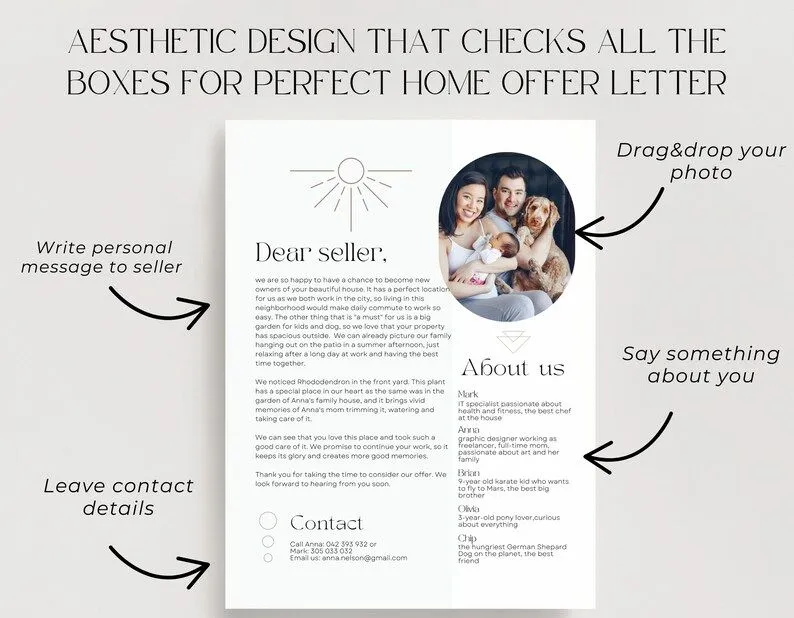
Go beyond the standard and add a personal touch to make your letter memorable. Share a brief anecdote about why you’re looking to buy a home, why you love the area, or how you envision yourself in the property. This can make your letter more engaging and relatable. If you have a family, mention your children and their excitement about the new home. If you plan to renovate, share your vision while emphasizing respect for the property’s character. This personal touch can set you apart from other buyers and create a genuine connection with the seller. This is your chance to show off your personality and let the seller know who you are.
Formatting and Style Ensuring Readability
The formatting and style of your home offer cover letter play a vital role in its overall effectiveness. A well-formatted letter is easy to read and visually appealing, which keeps the seller engaged. Choose a professional font, such as Times New Roman or Arial, in a readable size. Use clear and concise language, avoiding jargon or overly complex sentences. Pay attention to grammar and spelling, ensuring that your letter is free of errors. Proofread your letter carefully before sending it. Ensure that your letter is properly structured with clear paragraphs, making it easy for the seller to follow your thoughts. Use formatting techniques to emphasize key points and create a visually appealing layout. A good layout will help the reader enjoy reading the letter, making your point more clear.
Choosing the Right Tone
The tone of your home offer cover letter should be professional yet personal. It should be sincere, respectful, and enthusiastic. Avoid sounding overly aggressive or demanding. Instead, express your genuine interest in the property and your appreciation for the seller’s home. Be polite and considerate, showing that you respect their decisions. The tone should be consistent throughout the letter. Make sure your communication is appropriate and professional. When you find the right tone, it will make a big difference in creating a positive impression. This will go far to get you your new home.
Formatting Tips
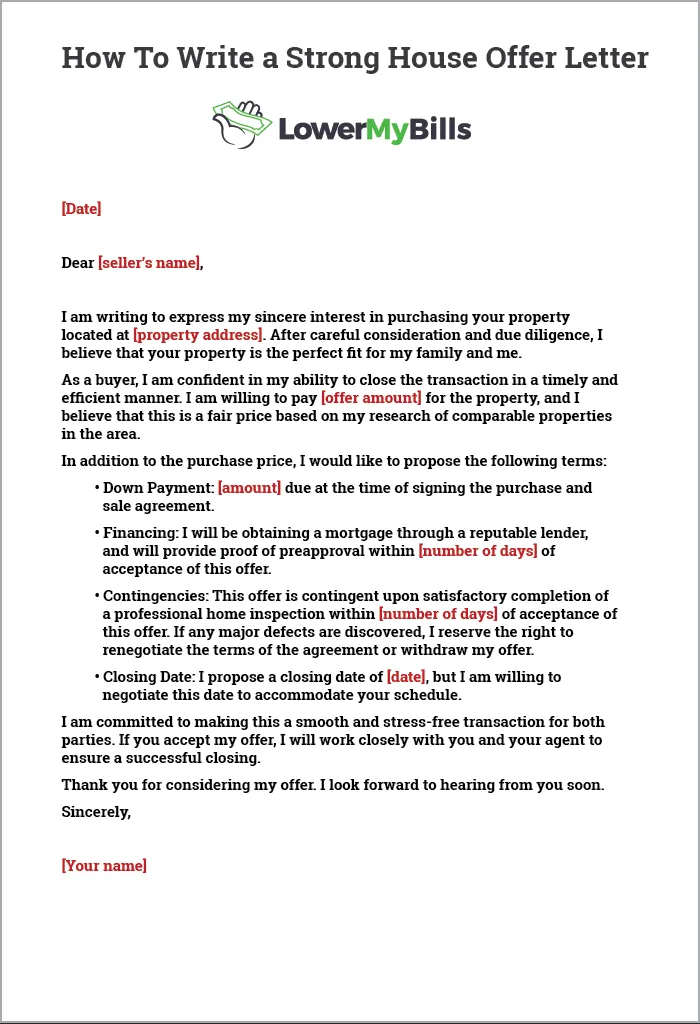
Keep the letter concise, ideally no more than one page. Use clear and concise language, avoiding unnecessary jargon or overly complex sentences. Divide your letter into well-defined paragraphs, each focusing on a specific point. Use a professional font like Times New Roman or Arial, with a font size between 11 and 12 points. Use bullet points to list key features or advantages, making your points easy to read and understand. Include a proper heading with your name, contact information, and the date. At the end of the letter, include a professional closing and your signature. With a good layout, you show your respect for the reader. This shows how serious you are to get the house.
Proofreading and Editing
Proofreading and editing your home offer cover letter is crucial. Even minor grammatical errors or spelling mistakes can detract from your credibility and leave a negative impression. Carefully review your letter for any errors in grammar, punctuation, and spelling. Ensure that your sentences are clear, concise, and well-structured. Read the letter aloud to catch any awkward phrasing or unclear language. It’s also helpful to have a friend or family member review your letter for feedback. A fresh pair of eyes can often spot errors you might have missed. A well-proofread letter demonstrates your attention to detail and your commitment to professionalism. Having someone else read it will give you the chance to see what someone else thinks of your letter.
Common Mistakes to Avoid
While writing a home offer cover letter is an excellent strategy, there are common pitfalls to avoid. These mistakes can undermine your efforts and reduce your chances of success. By understanding and avoiding these errors, you can increase the impact of your letter and make a stronger impression on the seller. Make sure you know what not to do when you prepare your letter to maximize your chances. Knowing about the common mistakes can help you get the perfect home.
Overly Generic Content
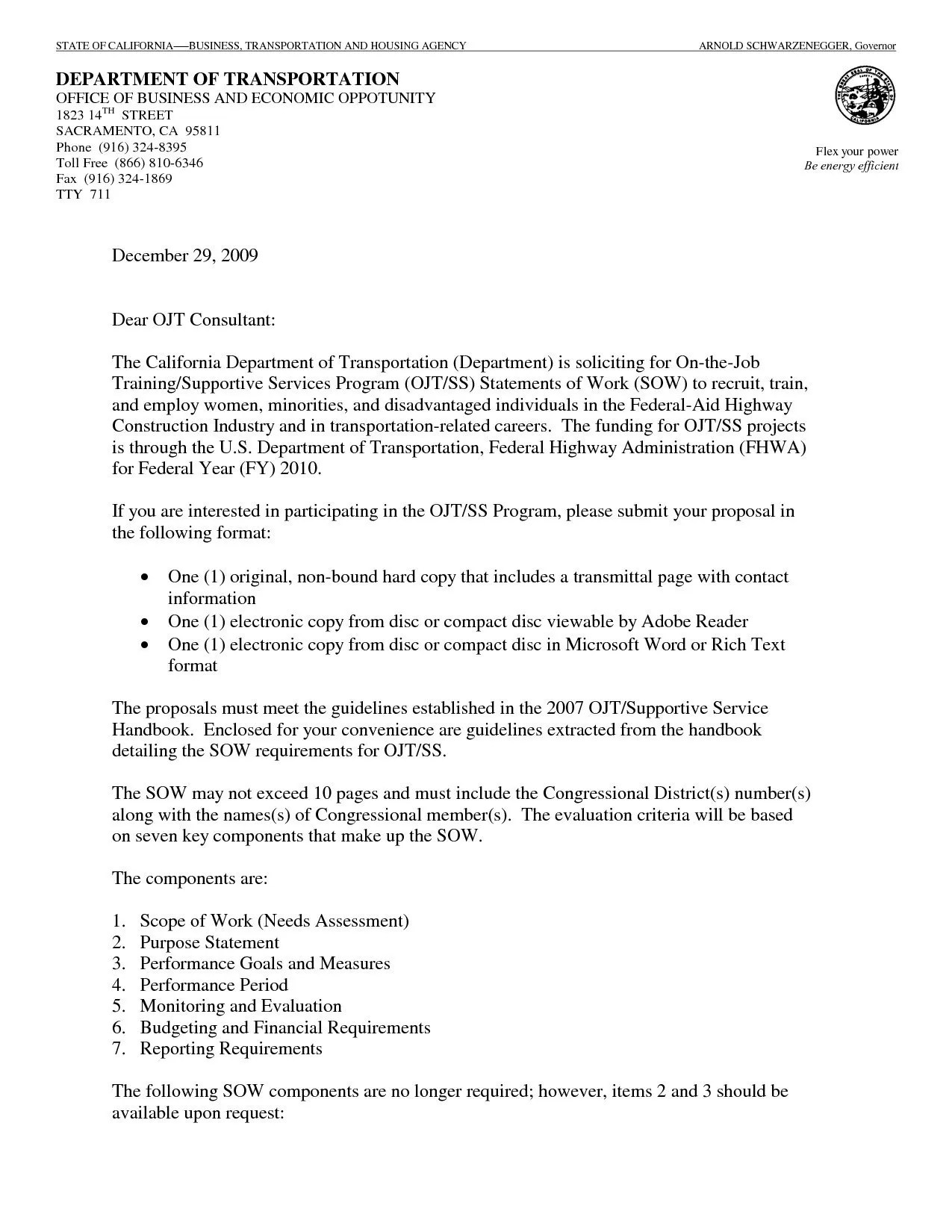
Avoid using generic content that could be applied to any property. Generic letters show a lack of effort and genuine interest. Tailor your letter to the specific property, highlighting its unique features and expressing your appreciation for what makes it special. Research the property, the neighborhood, and the seller to personalize your message. Mention specific details that resonate with you, demonstrating that you’ve taken the time to learn about their home. A generic letter will show that you are not truly interested in the home. This will lower the chances of the seller considering your offer. So, the more detail you add, the more chances you get.
Focusing Solely on Price
While the price is important, don’t make it the sole focus of your letter. The seller may be looking for more than just the highest offer. Use your letter to highlight your other strengths and demonstrate your enthusiasm for the property. Express your genuine interest in the home and its unique features. Mention the neighborhood and the things you love about it. Share your plans for the property and how you envision yourself living there. Remember, the cover letter is your chance to connect with the seller on a personal level. It helps you stand out from the other buyers.
Poor Grammar and Spelling
Poor grammar and spelling can undermine your credibility and leave a negative impression. Proofread your letter carefully for any errors in grammar, punctuation, and spelling. Ensure that your sentences are clear, concise, and well-structured. Use a grammar checker to catch any mistakes you might have missed. It’s also a good idea to have a friend or family member review your letter for feedback. A well-written letter demonstrates your attention to detail and your commitment to professionalism. A letter with many mistakes will show that you are not serious. This will reduce your chances of having your offer accepted. This is important in the real estate business.
Examples of Effective Home Offer Cover Letters

Studying examples of effective home offer cover letters can provide valuable inspiration and guidance. The letters can offer different approaches, tones, and levels of detail, and help you tailor your own letter to your situation. The following examples demonstrate how to incorporate various elements effectively. Remember to adapt these examples to your unique circumstances and personalize your message to the seller. The examples offer an excellent guide to follow when you are writing your own letter. Having a plan for how to set up your letter will help you get the offer accepted.
Example Letter 1 First-Time Homebuyers
Dear [Seller’s Name],
My name is [Your Name], and I am writing to express my sincere interest in purchasing your beautiful home at [Address]. As a first-time homebuyer, I am incredibly excited about the prospect of owning my own home, and your property has truly captured my heart.
I have been pre-approved for a mortgage with [Lender Name] for up to $[Amount], which demonstrates my financial readiness. I am particularly drawn to [mention a specific feature of the home, e.g., the charming backyard, the renovated kitchen].
I can close on the property within [number] days of an accepted offer, and I am flexible with the closing date to accommodate your needs.
Thank you for your time and consideration. I look forward to the opportunity to make your house my home.
Sincerely, [Your Name] [Your Contact Information]
Example Letter 2 Relocating Buyers
Dear [Seller’s Name],
My name is [Your Name], and I am writing to express my strong interest in your home at [Address]. I am relocating to [City] for a new job opportunity, and I have been searching for the perfect home for my family.
I am pre-approved for a mortgage with [Lender Name] for up to $[Amount]. I love the [mention a specific feature, e.g., the spacious living area, the location near parks].
I am prepared to offer [Offer Price] and I can close within [Number] days. I am also flexible with the closing date.
Thank you for your time and consideration. I would be thrilled to call your house our home.
Sincerely, [Your Name] [Your Contact Information]
Example Letter 3 Cash Buyers
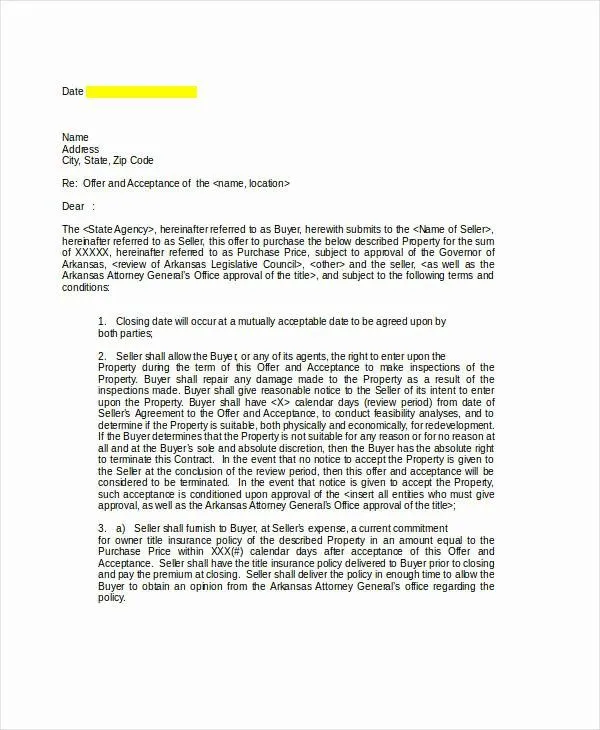
Dear [Seller’s Name],
My name is [Your Name], and I am writing to express my interest in your beautiful home at [Address]. I am a cash buyer, which will allow for a quick and efficient closing process.
I am particularly drawn to [mention a specific feature of the property]. I can offer $[Offer Price] and am prepared to close within [Number] days of an accepted offer.
Thank you for your time and consideration. I look forward to hearing from you soon.
Sincerely, [Your Name] [Your Contact Information]
Final Thoughts Putting It All Together
Crafting a compelling home offer cover letter is an art that combines professionalism, personalization, and genuine enthusiasm. By understanding the key components, avoiding common mistakes, and drawing inspiration from examples, you can significantly increase your chances of success. Remember to tailor your letter to the specific property and seller, highlighting your strengths and expressing your appreciation for the home. Take the time to craft a well-written letter that showcases your personality and commitment. The home offer cover letter is an important tool, so use it wisely and strategically. With effort and attention to detail, you can create a cover letter that helps you secure your dream home. Good luck with your home-buying journey.
